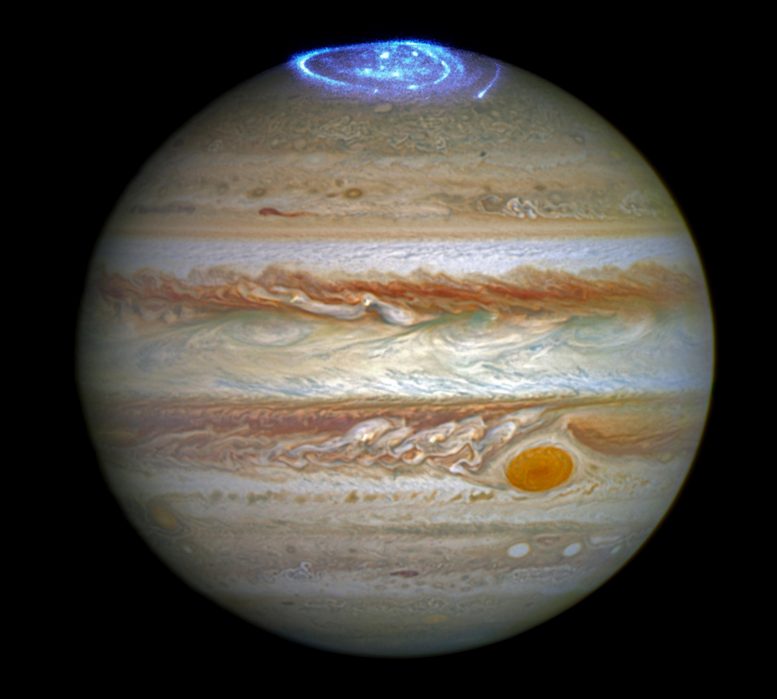
This composite image shows the location of Jupiter’s northern aurorae, as seen by the Hubble Space Telescope. Strong auroral activity occurs very near the pole, a feature unique in the solar system to Jupiter. Credit: NASA, ESA, and J. Nichols, University of Leicester
Magnetic reconnection events less than 2 Jovian radii above the planet’s cloud tops could explain why Juno has yet to observe a source for Jupiter’s polar aurore.
Like Earth, Jupiter’s magnetic field channels electrically charged particles into its atmosphere, resulting in the formation of brilliant aurorae near its poles. However, the brightness and variety of Jupiter’s auroral emissions exceed those generated on our planet. Of particular interest are patches of emission that originate from even closer to the poles than the main aurorae, a feature that appears far stronger at Jupiter than at Earth or Saturn.
Emission in the polar region can be fleeting, lasting minutes or sometimes only seconds. The polar auroral area can be further divided into three morphologies: “dark” regions of minimal emission, “active” regions of vigorous emission, and, at the highest latitudes, “swirl” regions of turbulent emission.
NASA’s Juno spacecraft has detected downward particle fluxes that can account for the main emission. However, no such flux has been found that could account for the bulk of the polar emissions, especially those from the swirl regions. Masters et al. propose a mechanism that would not yet have been observed by Juno: magnetic reconnection occurring not far above the Jovian cloud tops.
The authors perform one-dimensional magnetohydrodynamic modeling to track the evolution of individual magnetic field lines in the vicinity of Jupiter’s pole. They model the region starting at the top of the planet’s atmosphere and extending 2 Jovian radii from that point. This region lies entirely below any extant spacecraft observations.
Waves moving through the plasma enter the model domain from above, generated by interactions farther out in the planet’s magnetosphere. The propagation of these waves has the effect of deflecting the idealized magnetic field lines from a perfectly vertical position. This is a small effect, on the order of 0.01°, but it may be sufficient to kick-start magnetic reconnection events between neighboring field lines.
During reconnection, adjacent field lines break and reform in a more energetically favorable configuration. This process releases energy stored within the field, which is carried away by the acceleration of nearby charged particles. The authors suggest downward traveling energetic electrons may be the source of the swirl regions in Jupiter’s polar aurorae.
Finally, the authors suggest that this effect isn’t important at Earth or Saturn because of their weaker magnetic fields. Jupiter’s field is more than an order of magnitude stronger, and the reconnection rate increases by roughly the square of that value. Thus, Jupiter has strong polar aurorae, whereas Earth and Saturn do not.
Reference: “Magnetic Reconnection Near the Planet as a Possible Driver of Jupiter’s Mysterious Polar Auroras” by A. Masters, W. R. Dunn, T. S. Stallard, H. Manners and J. Stawarz, 14 July 2021, Journal of Geophysical Research: Space Physics.
DOI: 10.1029/2021JA029544

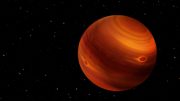


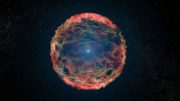
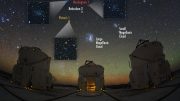
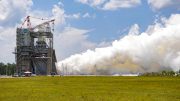


Be the first to comment on "Could Low-Altitude Magnetic Reconnection Power Jupiter’s Polar Aurorae?"